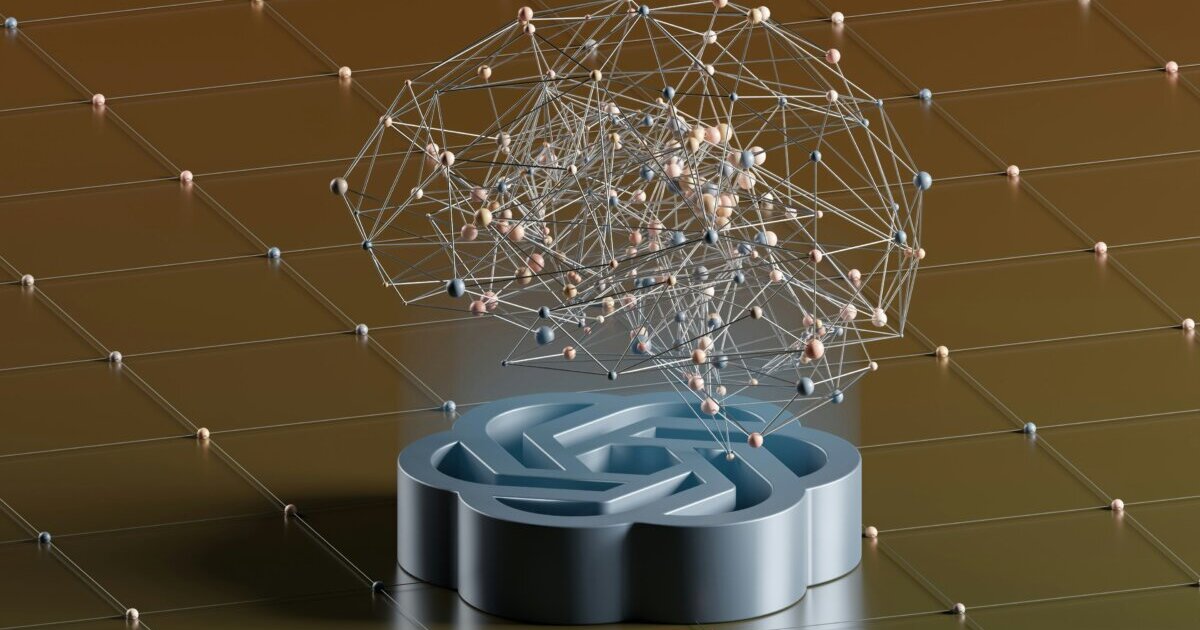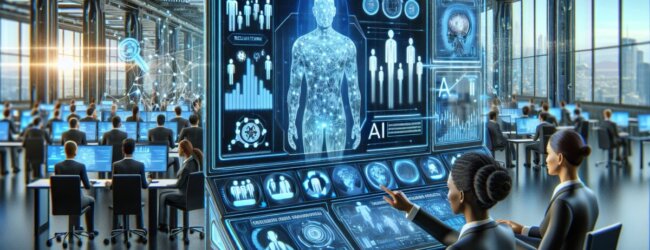
Exploring the Revolutionary Potential of AI and Neural Networks in the Digital Age
Author: Maximilian Giffhorn
· 4 mins readIntroduction to AI and Neural Networks
Artificial Intelligence (AI) and neural networks have become buzzwords in the digital age. As technology continues to advance at an unprecedented pace, the potential of AI and neural networks to revolutionize various industries is becoming increasingly evident. In this article, I will delve into the basics of AI and neural networks, explore their history, discuss their applications in different sectors, and analyze the potential benefits and challenges they present in the digital age.
Understanding the Basics of AI
Artificial Intelligence refers to the development of computer systems that can perform tasks that would typically require human intelligence.
These tasks include:
- Speech recognition,
- Visual perception,
- Decision-making, and
- Problem-solving.
AI systems are designed to mimic human cognitive processes, enabling them to learn from data, adapt to new information, and make informed decisions.
Machine Learning (ML) is a branch of AI that focuses on the development of algorithms and models that allow computers to learn from and make predictions or decisions based on data.
ML algorithms can be broadly categorized into:
- Supervised,
- Unsupervised, and
- Reinforcement learning.
Supervised learning involves training ML models on labeled data, while unsupervised learning involves training models on unlabeled data to identify patterns. Reinforcement learning uses a reward system to train models to make optimal decisions.
What are Neural Networks and How Do They Work?
Neural networks are a fundamental component of AI systems. They are inspired by the structure and functioning of the human brain. A neural network is composed of interconnected nodes, called artificial neurons or “perceptrons,” organized in layers. The input layer receives data, which is then processed through hidden layers before reaching the output layer.
Neural networks learn from data through a process called training. During training, the network adjusts the weights and biases of its connections to optimize its performance. This is achieved by comparing the network’s output to the desired output and using various optimization algorithms to minimize the difference.
The History
The history of AI dates back to the 1950s when computer scientists first began exploring the concept of machines that could simulate human intelligence. The term “artificial intelligence” was coined in 1956 at the Dartmouth Conference, where researchers aimed to develop machines that could “simulate any intellectual task that a human being can do.”
Neural networks have a long history as well. The concept of artificial neurons was introduced in the 1940s, and the first artificial neural network, known as the Perceptron, was developed in the late 1950s. However, progress in neural networks faced significant challenges due to limitations in computing power and the lack of large datasets for training.
Need Expert IT Solutions?
Get a Free Consultation Today!
Whether you’re dealing with network issues, cybersecurity concerns, or software integration, our team of IT experts is here to help. Don’t let tech troubles slow you down. Call us now for a complimentary initial assessment, or click below to fill out our quick contact form. Let’s make technology work for you.
The Applications
AI and neural networks have found applications in a wide range of industries, revolutionizing the way businesses operate.
In healthcare, AI is being used to:
- Analyze medical images,
- Diagnose diseases, and
- Develop personalized treatment plans.
In finance, AI-powered algorithms are used for:
- Fraud detection,
- Risk assessment, and
- Investment portfolio management.
The retail industry has also benefited from AI and neural networks:
- Recommendation systems, powered by AI, are providing personalized product recommendations to customers, enhancing their shopping experience.
In supply chain management, AI is used to:
- Optimize inventory levels,
- Predict demand, and
- Improve logistics.
Transportation and logistics have seen significant advancements with the use of AI and neural networks:
- Self-driving cars, powered by AI algorithms, are being developed to improve road safety and enhance transportation efficiency.
- AI-based route optimization algorithms are helping logistics companies streamline their operations and reduce costs.
The Potential Benefits and Challenges
The potential benefits of AI and neural networks in the digital age are immense.
They have the power to:
- Revolutionize industries,
- Improve efficiency, and
- Enhance our quality of life.
AI-based automation can eliminate repetitive tasks, freeing up human resources for more complex and creative work. Neural networks are capable of processing and analyzing vast amounts of data, enabling us to make better-informed decisions.
However, the rapid advancement of AI and neural networks also presents challenges.
One of the primary concerns is the ethical implications of their use. As AI systems become more autonomous, questions arise regarding accountability, transparency, and bias. There is a need for ethical frameworks to ensure that AI and neural networks are developed and used responsibly.
The Ethical Considerations
The ethical considerations surrounding AI and neural networks are complex and multifaceted. Issues such as privacy, data security, and algorithmic bias need to be addressed to ensure that AI systems are fair and unbiased. Transparency in algorithmic decision-making is crucial to build trust and prevent the misuse of AI technology.
Additionally, the impact of AI on employment and the workforce is a significant ethical concern. While AI can automate mundane tasks, it also has the potential to replace human jobs. It is essential to develop strategies to reskill and upskill the workforce to adapt to the changing job market.
The Future of AI and Neural Networks
The future of AI and neural networks is promising. As technology continues to advance, AI systems will become more sophisticated and capable of solving complex problems.
We can expect AI to play a crucial role in various fields, including:
- Healthcare,
- Finance,
- Transportation, and
- Education.
However, with this progress comes the need for continued research and development. Researchers are exploring new architectures and algorithms to improve the performance and efficiency of neural networks. Advances in hardware, such as the development of specialized AI chips, will also contribute to the growth of AI and neural networks.
How to Get Started
Getting started with AI and neural networks may seem daunting, but there are resources available to help beginners dive into this exciting field.
- Online courses and tutorials provide a structured approach to learning the basics of AI and neural networks.
- Platforms like TensorFlow and PyTorch offer user-friendly frameworks for building and training neural networks.
It is also essential to stay updated with the latest research and advancements in the field of AI. Following conferences, reading research papers, and participating in online forums can help you stay informed and connected with the AI community.
Conclusion
In conclusion, AI and neural networks have the potential to revolutionize industries and reshape the way we live and work in the digital age. They offer immense benefits, from improved efficiency and decision-making to personalized experiences and enhanced safety. However, ethical considerations must be at the forefront of AI development to ensure responsible and unbiased use.
As AI and neural networks continue to advance, it is essential for businesses and individuals to embrace their potential and adapt to the changing landscape. By understanding the basics, exploring applications, and staying informed, we can harness the power of AI and neural networks to drive innovation and create a better future.
Additional Resources
Read more on Artificial Intelligence (AI) by visiting our blog, or see our services to discover how we can help your business!





Share